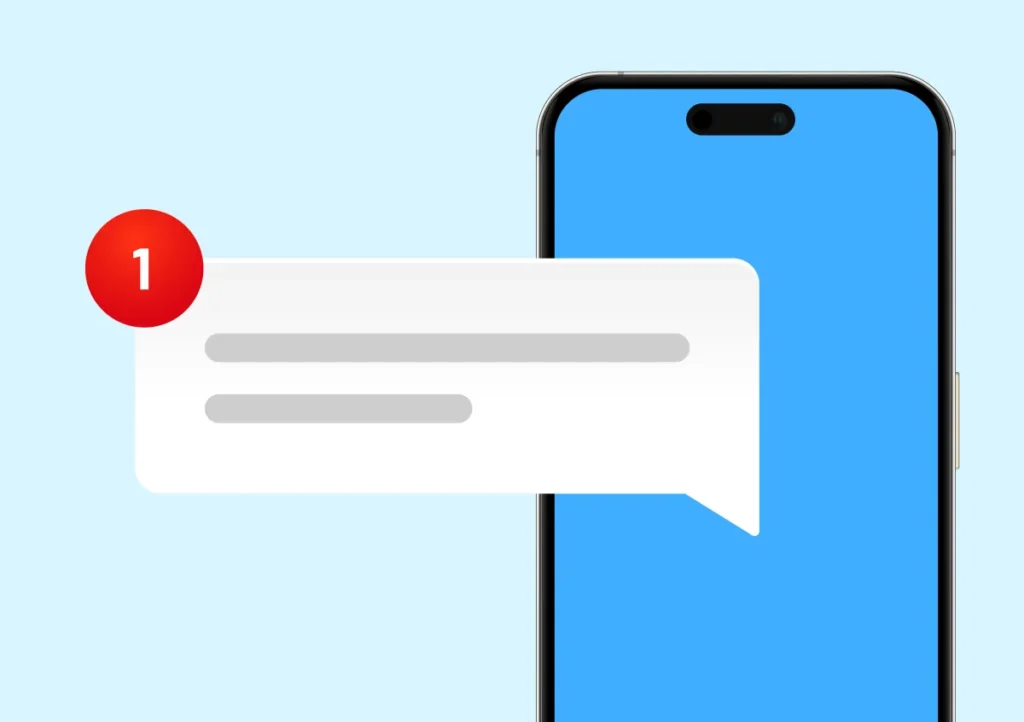SMS marketing has become an essential tool in the modern marketer’s toolkit. When your customer’s email inbox is overflowing and social media feeds are crowded with content, a well-crafted SMS cuts through the noise and demands immediate attention. The numbers speak for themselves – most text messages are read within minutes of receipt, creating a direct line to your customers that few other channels can match.
Small businesses and major brands alike are discovering that strategic SMS marketing drives real results: increased foot traffic, higher conversion rates, and strengthened customer loyalty. The key is implementing SMS thoughtfully, respecting the personal nature of this communication channel while delivering genuine value with each message.
This guide explores proven strategies to help you develop an effective SMS marketing program that your customers will appreciate and that will drive measurable business growth.
Building a Subscriber List

A successful SMS marketing campaign begins with a robust subscriber list. Unlike email, where consumers might have multiple addresses and inboxes full of unread messages, mobile phone numbers typically represent a direct line to your customer. This makes building a quality subscriber list even more crucial for SMS marketing success.
The foundation of an effective subscriber list is obtaining explicit permission from customers. Cold texting is not only ineffective but can also damage your brand reputation and potentially violate regulations. Instead, focus on creating valuable opportunities for customers to opt into your SMS communications.
Many businesses make the mistake of purchasing phone number lists or adding customers to SMS campaigns without proper consent. This approach not only risks legal repercussions but also results in poor engagement and high unsubscribe rates. A properly cultivated subscriber list, on the other hand, consists of customers who have expressed genuine interest in your brand and offerings.
When building your SMS subscriber list, consider offering immediate value in exchange for sign-ups. This could include exclusive discounts, early access to new products, or valuable content that addresses customer pain points. Remember that customers are more likely to share their phone numbers when they perceive clear and immediate benefits to doing so.
Let’s explore specific opt-in methods and compliance considerations to ensure your subscriber list is both legally sound and primed for high engagement.
Opt-In Methods
Implementing effective opt-in methods is essential for growing your SMS subscriber base while maintaining compliance and building trust. Here are several proven approaches to collect phone numbers with proper consent:
Keyword Campaigns: Create a simple keyword that customers can text to a short code to subscribe. For example, “Text DAILY to 55555 to receive exclusive offers.” This method works particularly well when promoted across various marketing channels like social media, print materials, or in-store signage.
Website Sign-Up Forms: Integrate SMS opt-in checkboxes within existing forms on your website, such as account creation, newsletter subscriptions, or checkout processes. DailyStory’s web forms feature makes this integration seamless and captures consent documentation automatically.
QR Codes: Generate QR codes that, when scanned, direct customers to an SMS opt-in form. This works exceptionally well for physical marketing materials and in-store displays. DailyStory offers QR code generation capabilities that can be tracked for performance.
Point-of-Sale Opportunities: Train staff to collect phone numbers during checkout, ensuring they clearly communicate the value proposition and obtain verbal consent.
Contests and Giveaways: Host promotions where entry requires SMS opt-in, creating an incentive for participation while growing your subscriber list.
Remember that each opt-in method should clearly communicate what customers are signing up for, including content type and message frequency. Double opt-in processes, where customers confirm their subscription after initial sign-up, can further strengthen compliance and ensure subscriber quality.
Legal Considerations and Compliance
Navigating the legal landscape of SMS marketing is non-negotiable for businesses. Failure to comply with regulations can result in substantial penalties, damage to brand reputation, and loss of customer trust. Here are the key compliance factors every business must address:
TCPA Compliance: The Telephone Consumer Protection Act (TCPA) requires businesses to obtain written consent before sending marketing messages. This consent must be specific, clearly worded, and separate from other terms and conditions.
CAN-SPAM Act: Though primarily focused on email, certain provisions apply to SMS marketing as well, particularly regarding honest representation of your business and providing clear opt-out mechanisms.
CTIA Guidelines: The Cellular Telecommunications Industry Association has established best practices for SMS marketing, including guidelines on content, timing, and frequency.
Documenting Consent: Maintain records of how and when each subscriber opted in to receive your messages.
Clear Opt-Out Instructions: Every message should include simple instructions for unsubscribing, typically by replying with “STOP.” When a customer opts out, their request must be honored immediately.
Privacy Policy: Ensure your privacy policy clearly addresses how you collect, store, and use phone numbers and related customer data.
Even with proper compliance measures in place, it’s advisable to consult with legal counsel familiar with telecommunications regulations in your operating regions. Different countries and even states may have varying requirements that affect your SMS marketing strategies.
With a legally compliant subscriber list in place, you’re ready to craft messages that will resonate with your audience and drive results.
Creating the Perfect SMS Message

The limited character count of SMS messages presents both a challenge and an opportunity for marketers. With just 160 characters in a standard text message, every word must contribute to your message’s effectiveness. This constraint actually forces marketers to create concise, high-impact content that gets straight to the point—something today’s consumers appreciate.
The most successful SMS marketing messages share several common characteristics. They deliver clear value, create a sense of urgency, speak directly to the recipient, and include an unmistakable call to action. Unlike email or social media, SMS doesn’t rely on images or complex formatting to convey your message, making the actual text all the more important.
When crafting your SMS messages, consider the customer’s perspective. They’ve interrupted their day to read your message—will they find it valuable or intrusive? The difference often comes down to relevance, timing, and providing something of genuine interest to the recipient.
A/B testing different message variations can provide valuable insights into what resonates best with your audience. Test different value propositions, CTAs, or personalization elements to optimize performance over time.
Remember that SMS marketing messages exist in a personal space—the same platform where consumers communicate with friends and family. Your messages should respect this intimate channel by providing value and maintaining an appropriate tone that aligns with your brand voice while still feeling conversational.
Personalization Techniques
Personalization transforms generic broadcasts into one-to-one conversations, significantly boosting engagement and conversion rates. When a customer feels recognized as an individual rather than just another phone number, they’re more likely to respond positively to your message.
Basic personalization begins with addressing customers by name, but effective SMS personalization goes much further:
Behavioral Triggers: Send messages based on specific customer actions, such as cart abandonment, recent purchases, or website browsing behavior. For example, “Hi Sarah, we noticed you left some items in your cart. Your selections are still available with free shipping until tomorrow!”
Purchase History: Reference previous purchases to make relevant recommendations. “John, based on your recent purchase of running shoes, you might like our new moisture-wicking socks—20% off with code RUNNER.”
Location-Based Messaging: Utilize geographic data to send relevant offers. “Hi Maria! You’re near our Downtown location—stop by today to claim your free coffee upgrade!”
Special Occasions: Acknowledge birthdays, anniversaries, or customer milestones. “Happy birthday, Michael! Enjoy 25% off your next order as our gift to you.”
DailyStory’s segmentation tools enable businesses to implement these personalization techniques efficiently, creating more relevant and engaging messages without requiring manual customization for each recipient. With proper integration with your CRM or e-commerce platform, these personalized touches can be largely automated while still feeling genuinely personal.
Optimal Message Length
While standard SMS messages are limited to 160 characters, determining the ideal message length involves balancing completeness of information with brevity and impact. Research consistently shows that shorter messages typically outperform longer ones in terms of read rates and response rates.
The optimal SMS marketing message follows these length guidelines:
Keep it under 100 characters when possible: Messages under 100 characters have been shown to have higher engagement rates as they can be comprehended at a glance.
Front-load key information: Place your offer, value proposition, or most important information at the beginning of the message to ensure it’s seen even if the recipient only skims the text.
Avoid unnecessary words: Every word should serve a purpose. Remove filler words, excessive punctuation, and unnecessary details that don’t contribute to your core message.
Use recognized abbreviations carefully: While some abbreviations are widely understood (e.g., “info” instead of “information”), using too many text-speak abbreviations can appear unprofessional and potentially confuse your audience.
Consider this example of an unnecessarily long message: “Hello valued customer! We wanted to let you know about our amazing summer sale happening right now with incredible discounts on all items throughout our store including new arrivals and clearance items that you won’t want to miss!”
Now compare it to this optimized version: “Summer SALE: 30% off storewide! Use code SUMMER30 at checkout. Valid today only. Shop now: [link]”
The second message delivers all essential information in fewer characters, creating a clearer, more actionable message for the recipient.
Clear Call-to-Action (CTA)
Every effective SMS marketing message should include a clear, compelling call-to-action that directs recipients toward the desired next step. Without a strong CTA, even an otherwise well-crafted message may fail to generate meaningful results.
Follow these best practices for creating high-performing CTAs in your SMS campaigns:
Use action verbs: Begin your CTA with words that inspire immediate action like “Shop,” “Claim,” “Register,” “Buy,” or “Download.”
Create urgency: Incorporate time-limited language to encourage prompt responses. Phrases like “Today only,” “Limited spots available,” or “Ends at midnight” can significantly boost conversion rates.
Make it unmistakable: Your CTA should stand out from the rest of the message, often by appearing at the end, in all caps, or with special characters as visual separators.
Include direct links: When directing customers to your website, use shortened URLs (DailyStory provides URL shortening tools) that are trackable and consume fewer characters.
Here are examples of strong CTAs:
- “REPLY YES to confirm your appointment”
- “SHOW THIS TEXT for your free appetizer”
- “Click here to redeem: [link]”
- “Use code SAVE20 at checkout”
For best results, include just one CTA per message. Multiple CTAs can create confusion and decision paralysis, ultimately reducing response rates.
With your message content optimized, the next critical consideration is when and how often to send your SMS campaigns to maximize their effectiveness.
Timing and Frequency of SMS Campaigns

The timing of your SMS marketing messages can dramatically impact their effectiveness. Unlike email, which consumers might check at designated times during their day, SMS messages create immediate interruptions. This immediacy makes proper timing essential—send at the wrong time, and you risk annoying recipients; send at the right time, and you can significantly boost engagement and conversion rates.
SMS marketing timing should be approached strategically, based on your campaign objectives, audience demographics, and the nature of your offer. For example, a flash sale announcement might perform best when sent during lunch hours when people have time to browse, while appointment reminders are most effective 24 hours before the scheduled time.
Equally important is the frequency of your messages. Bombarding subscribers with too many texts can quickly lead to opt-outs, regardless of how valuable each individual message might be. Conversely, messaging too infrequently might cause customers to forget they subscribed to your service, leading to confusion or frustration when they do receive a message.
DailyStory’s automation capabilities allow you to schedule messages at optimal times and manage frequency caps to prevent over-messaging, striking the perfect balance between staying top-of-mind and respecting your customers’ attention.
Let’s explore specific guidelines for timing and frequency to help you maximize the impact of your SMS marketing campaigns.
Best Times to Send Messages
Identifying the optimal times to send SMS messages requires understanding your audience’s daily routines and preferences. While these can vary by industry and customer demographic, research has revealed several generally effective timeframes:
Weekday Mornings (10:00 AM – 12:00 PM): Many people check their phones during mid-morning breaks, making this an excellent time for non-urgent messages.
Lunch Hours (12:00 PM – 2:00 PM): This window often sees high engagement rates as people use their lunch breaks to catch up on messages and browse online.
Early Evening (6:00 PM – 8:00 PM): After work hours but before bedtime routines is ideal for retail promotions and entertainment offers when people have more leisure time.
Avoid Early Mornings and Late Nights: Messages before 9:00 AM or after 9:00 PM generally have lower engagement and may be perceived as intrusive, potentially leading to opt-outs.
Industry-specific timing considerations also matter:
- Restaurants see higher response rates for lunch promotions when sent between 10:00-11:00 AM
- Retail flash sales often perform best when announced mid-afternoon (2:00-4:00 PM)
- Event reminders show optimal engagement when sent 3-4 hours before the event
The day of the week matters too. Tuesdays through Thursdays typically show higher engagement rates than Mondays (when people are catching up after the weekend) or Fridays (when people are focused on weekend plans). For retail businesses, however, Thursday and Friday messages about weekend specials can drive significant traffic.
For definitive answers specific to your audience, conduct A/B testing of different send times and analyze the results using DailyStory’s analytics tools.
Determining the Right Frequency
Finding the optimal message frequency requires balancing staying top-of-mind with avoiding subscriber fatigue. Here are evidence-based guidelines to help determine how often you should send SMS marketing messages:
Standard Best Practices:
- 2-4 messages per month is generally considered safe for most businesses
- No more than one message per week unless subscribers have explicitly opted into more frequent communications
- Special events like Black Friday may warrant temporary increases in frequency
Industry-Specific Considerations:
- Retail: 4-6 messages monthly, with potential increases during major shopping seasons
- Restaurants: 2-4 messages monthly, typically around key meal times or special events
- Service businesses: 1-2 messages monthly, plus appointment reminders as needed
- Financial services: 1-2 messages monthly, focusing on important alerts and updates
Customer-Driven Frequency: The most effective approach is allowing customers to select their preferred frequency during the opt-in process.
Monitor key metrics like unsubscribe rates to detect frequency problems. If unsubscribes spike after increasing message frequency, it’s a clear signal to dial back. Conversely, if engagement metrics are strong, you might have room to increase frequency slightly.
Remember that frequency expectations should be clearly communicated during the opt-in process. Setting proper expectations helps reduce opt-outs and complaint rates, even when sending at the higher end of recommended frequencies.
With proper timing and frequency established, the next step is ensuring your messages reach the right audience segments for maximum relevance and impact.
Segmenting Your Audience

Audience segmentation is the process of dividing your subscriber base into distinct groups based on specific characteristics or behaviors. Far from being just a marketing buzzword, segmentation is a fundamental practice that dramatically improves SMS marketing performance across all key metrics—from open rates and click-throughs to conversions and ROI.
The era of one-size-fits-all marketing messages is long gone. Today’s consumers expect communications tailored to their specific needs, preferences, and behaviors. When you send the same generic message to your entire subscriber list, you miss valuable opportunities to address the unique interests and pain points of different customer groups.
Effective segmentation allows you to craft messages that resonate with each specific audience segment. This targeted approach not only improves immediate campaign metrics but also builds stronger customer relationships by demonstrating that you understand and respect their individual preferences.
DailyStory’s segmentation capabilities make it easy to create and manage audience segments based on a wide range of criteria, from basic demographics to complex behavioral patterns. The platform’s unlimited segments feature ensures you can create as many targeted groups as needed to optimize your SMS marketing efforts.
Let’s explore why segmentation matters and how to implement it effectively in your SMS marketing strategy.
Importance of Segmentation
Segmentation transforms bulk SMS campaigns into precisely targeted communications, offering numerous benefits that directly impact your marketing performance and bottom line:
Higher Engagement Rates: Segmented campaigns consistently outperform generic broadcasts, with studies showing up to 60% higher click-through rates for properly targeted messages. When recipients receive content relevant to their specific interests or needs, they’re naturally more likely to engage.
Reduced Opt-Out Rates: One of the primary reasons subscribers opt out of SMS marketing lists is receiving irrelevant content. By delivering messages tailored to each segment’s preferences, you significantly reduce unsubscribe rates and preserve your hard-earned subscriber base.
Improved Conversion Rates: When your offers align with segment-specific interests and purchasing behaviors, conversion rates typically increase by 20-30%. This targeted approach ensures you’re promoting the right products or services to the most receptive audience.
Better Resource Allocation: Segmentation allows you to invest more in high-value customer segments while adjusting strategies for less responsive groups, optimizing your marketing budget and efforts.
Enhanced Customer Experience: Consumers appreciate brands that understand their preferences and don’t waste their time with irrelevant messages. Segmentation demonstrates respect for your customers’ individual needs, strengthening loyalty and brand perception.
Consider this real-world example: A clothing retailer segmented their SMS subscribers by gender and past purchase categories. Their summer sale campaign delivered segment-specific messages highlighting relevant departments (men’s casual, women’s formal wear, etc.) based on each customer’s demonstrated interests. The segmented campaign achieved a 37% higher conversion rate than their previous non-segmented approach.
With DailyStory’s powerful segmentation tools, implementing this level of targeting becomes straightforward, allowing businesses of any size to achieve similar improvements in campaign performance.
Methods to Segment Your Audience
Implementing effective segmentation requires a strategic approach based on meaningful data points. Here are proven methods to segment your SMS audience for maximum marketing impact:
Demographic Segmentation: Divide subscribers based on basic characteristics such as:
- Age groups (Gen Z, Millennials, Gen X, Baby Boomers)
- Gender
- Location (by city, state, or proximity to physical stores)
- Income level
- Family status (single, married, parents, etc.)
Behavioral Segmentation: Group subscribers based on their actions and engagement patterns:
- Purchase history (product categories, average order value, frequency)
- Website browsing behavior
- Previous SMS campaign engagement (clicks, redemptions)
- Cart abandonment
- Loyalty program participation
Customer Lifecycle Stage: Target based on where customers are in their journey with your brand:
- New subscribers who haven’t made a purchase
- First-time customers
- Repeat customers
- VIP/high-value customers
- At-risk customers (declining engagement)
- Inactive customers requiring re-engagement
Preference-Based Segmentation: Group by stated or observed preferences:
- Product/service interests (collected during opt-in)
- Communication preferences (frequency, content types)
- Preferred shopping channels (in-store vs. online)
Purchase Intent: Target based on signals of readiness to buy:
- Recently viewed products
- Wishlist items
- Comparison shopping behavior
- Seasonal buying patterns
DailyStory simplifies the implementation of these segmentation strategies through its interface, allowing you to create segments using simple or complex combinations of criteria. The platform also enables dynamic segmentation, where subscribers automatically move between segments based on their changing behaviors or preferences.
For example, a fitness studio using DailyStory might segment subscribers into “Active members,” “Class-specific attendees,” “At-risk members” (those who haven’t visited in 2+ weeks), and “Former members.” Each segment would receive tailored messages—from class recommendations for active members to win-back offers for former members—significantly improving campaign relevance and effectiveness.
With your audience properly segmented, the next step is integrating your SMS campaigns with other marketing channels to create cohesive, multi-touch customer experiences.
Integrating SMS with Other Marketing Channels
![]()
In today’s multi-channel marketing landscape, SMS shouldn’t exist in isolation. The most effective marketing strategies leverage the strengths of multiple channels working in concert, creating seamless customer experiences across touchpoints. When SMS marketing is strategically integrated with other channels, the combined impact is often greater than the sum of its parts.
SMS excels at delivering time-sensitive information and driving immediate action due to its exceptionally high open rates and quick engagement. However, it has limitations in terms of message length, visual content, and appropriate frequency. By integrating SMS with complementary channels like email, social media, and web marketing, you can overcome these limitations while amplifying your overall marketing effectiveness.
DailyStory’s marketing automation platform facilitates this integrated approach, allowing businesses to coordinate messaging across channels, maintain consistent branding, and track customer interactions throughout the entire journey—regardless of which channel they engage with.
The key to successful channel integration is understanding the unique strengths of each medium and deploying them strategically within your broader marketing framework. Let’s explore specific strategies for integrating SMS with other key marketing channels.
Combining SMS with Email Marketing
Email and SMS marketing complement each other perfectly when used in tandem, each addressing the other’s limitations while amplifying strengths. Here’s how to effectively integrate these channels:
Sequential Messaging Strategy: Use both channels in a coordinated sequence based on their strengths:
- Send detailed campaign information via email first (product details, multiple offers, rich visuals)
- Follow up with SMS reminders about key deadlines or limited-time offers
- Example: “Last chance! The sale we emailed you about ends tonight. Use code FINAL20 for 20% off.”
Channel-Specific Content Distribution: Leverage each channel’s unique advantages:
- Email: Detailed product information, multiple offers, rich visuals, comprehensive content
- SMS: Time-sensitive alerts, location-based offers, immediate CTAs, brief reminders
Cross-Channel Promotions: Boost engagement on both channels:
- Promote SMS opt-in through email newsletters
- Use SMS to alert subscribers to important emails they might have missed
- Example: “Check your inbox! We just sent exclusive member offers to your email.”
Coordinated Timing: Time your multi-channel communications strategically:
- Send email campaigns during work hours when people check business communications
- Follow up with SMS reminders during evening leisure time
- Space messages appropriately to avoid overwhelming recipients
Unified Data Approach: Ensure your email and SMS platforms share data to create consistent experiences:
- Suppress SMS sends to customers who have already converted through email
- Recognize cross-channel engagement in your analytics
- Maintain consistent personalization across both channels
DailyStory’s platform enables this unified approach by providing both email and SMS marketing capabilities within a single system, allowing for coordinated campaigns and shared analytics. This integration ensures consistent messaging and prevents the common problem of disjointed customer experiences that can occur when using separate platforms for different channels.
Using SMS for Social Media Promotions
SMS and social media marketing can work together synergistically, each channel amplifying the other’s reach and effectiveness. Here are strategic approaches to integrate these platforms:
Cross-Promotion Strategy: Expand your audience across both channels:
- Promote your SMS program on social media platforms to grow your subscriber list
- Include text-to-join keywords and shortcodes in social media profiles and posts
- Use SMS to alert subscribers to high-value social media content or live events
Time-Sensitive Social Campaigns: Leverage SMS for immediate engagement:
- Send text alerts about limited-time social media contests or giveaways
- Use SMS to drive participation in live social events like Twitter chats or Instagram Lives
- Example: “We’re going LIVE on Instagram in 30 mins with exclusive product reveals! Don’t miss it: [link]”
Coordinated Content Strategy: Create cohesive, multi-platform campaigns:
- Introduce campaign themes via social media with rich visuals and community engagement
- Follow up with personalized SMS offers related to the campaign
- Encourage SMS subscribers to share their experiences on social platforms using campaign hashtags
Social Proof via SMS: Leverage social credibility in your text marketing:
- Share impressive social media statistics or testimonials via SMS
- Example: “Our new product has 500+ 5-star reviews on Instagram! Get yours with 15% off: [link]”
Exclusive Cross-Channel Offers: Create special incentives for multi-channel engagement:
- Offer exclusive discounts via SMS that can only be redeemed by performing a specific social media action
- Example: “Show this text & follow us on Instagram for an extra 10% off your purchase today”
A restaurant chain successfully implemented this integrated approach by promoting a text-to-win contest on their social media accounts. Followers were encouraged to text a keyword to enter, significantly growing their SMS subscriber list while also increasing social engagement. New SMS subscribers then received a series of messages highlighting the restaurant’s most Instagram-worthy dishes, creating a virtuous cycle of cross-channel promotion.
By thoughtfully integrating SMS with both email and social media, you create a cohesive marketing ecosystem where each channel reinforces the others, creating more touchpoints and opportunities to convert prospects into customers.
Analyzing and Measuring Campaign Success

The true power of SMS marketing becomes apparent when you implement robust measurement and analysis practices. Without proper tracking, you’re essentially operating in the dark, unable to determine which strategies are driving results and which need refinement. Data-driven analysis allows you to continuously optimize your SMS campaigns for maximum ROI.
Successful SMS marketers adopt a systematic approach to measurement, establishing clear performance baselines and setting specific, measurable goals for each campaign. This analytical approach enables you to identify winning strategies, eliminate ineffective tactics, and make incremental improvements that compound over time.
Let’s explore the essential metrics you should track and the tools available to measure your SMS marketing performance effectively.
Key Metrics to Track
To comprehensively evaluate your SMS marketing effectiveness, you need to monitor metrics across the entire customer journey, from delivery to conversion. Here are the essential metrics every SMS marketer should track:
Delivery Rate: The percentage of messages successfully delivered to recipients’ devices. Industry benchmark: 97-99%.
- Calculation: (Number of messages delivered ÷ Number of messages sent) × 100
- Low delivery rates may indicate list quality issues or carrier filtering problems
Open Rate: While traditional SMS doesn’t provide true open tracking like email, “read receipts” are available on some platforms and can provide estimates. Industry benchmark: 95-98%.
Click-Through Rate (CTR): The percentage of recipients who clicked on a link in your message. Industry benchmark: 10-20%.
- Calculation: (Number of clicks ÷ Number of delivered messages) × 100
- Particularly important for campaigns driving web traffic or online purchases
Conversion Rate: The percentage of recipients who completed the desired action (purchase, sign-up, etc.). Industry benchmark: 1-5%.
- Calculation: (Number of conversions ÷ Number of delivered messages) × 100
- The ultimate measure of campaign effectiveness
Opt-Out Rate: The percentage of recipients who unsubscribed after receiving your message. Industry benchmark: Below 3%.
- Calculation: (Number of opt-outs ÷ Number of delivered messages) × 100
- A critical indicator of message relevance and frequency appropriateness
Response Rate: For two-way SMS campaigns, the percentage of recipients who replied to your message. Industry benchmark: 15-30% for campaigns explicitly requesting replies.
ROI (Return on Investment): The revenue generated compared to the cost of your SMS campaign. Industry benchmark: Varies by industry, but typically ranges from 500-2000%.
- Calculation: ((Revenue generated – Campaign cost) ÷ Campaign cost) × 100
Cost Per Acquisition (CPA): The cost to acquire one customer or conversion through your SMS campaign.
- Calculation: Total campaign cost ÷ Number of conversions
Time-Based Metrics: Analyzing when recipients engage with your messages:
- Time to click (how quickly recipients click after message delivery)
- Conversion time window (when most conversions occur after message receipt)
Tools for Measuring SMS Campaign Performance
Effective measurement requires the right tools to collect, analyze, and visualize your SMS marketing data. Here are the essential tools and features for comprehensive SMS campaign measurement:
A/B Testing Tools: Systematic testing is essential for optimization.
Conversion Tracking: Advanced tracking tools connect SMS interactions to conversions, even when they occur on other channels or at a later date.
Custom Reporting: Standard reports don’t always answer your specific business questions.
Integration Capabilities: Connect your SMS platform with other business systems like CRM, e-commerce platforms, and business intelligence tools.
Segment Comparison Tools: Compare performance across different audience segments to identify your highest-value customer groups and refine your targeting strategy accordingly.
Heatmaps and Visualization: Visual representations of data make it easier to identify patterns and trends. Look for tools that offer visual analytics to complement raw numbers and percentages.
When using these measurement tools, establish a regular cadence for analyzing results and implementing improvements. Many successful SMS marketers schedule weekly reviews of campaign performance, with more comprehensive analysis conducted monthly or quarterly to identify broader trends and opportunities.
With robust analytics in place, you can make data-driven decisions about every aspect of your SMS marketing strategy, from audience segmentation and message content to timing and frequency. This commitment to measurement and optimization is what separates highly successful SMS marketing programs from mediocre ones.
Maximizing SMS Marketing Success

Successful SMS marketing relies on several key principles that apply across industries and business types. By following these strategies, you can develop campaigns that resonate with your audience and drive measurable results.
Focus on Immediate Value
Every text message should deliver clear, immediate value to the recipient. This could be:
- Exclusive offers not available through other channels
- Time-sensitive information that benefits the recipient
- Personalized recommendations based on previous interactions
- Convenient solutions to known customer pain points
The more value-packed your messages, the more likely subscribers will remain engaged and responsive over time.
Create Urgency Without Pressuring
Effective SMS marketing often includes elements of urgency that encourage prompt action:
- Limited-time offers with clear deadlines
- Limited-quantity promotions that reward quick responses
- Flash sales announced exclusively via text
- Countdown reminders for important events or deadlines
The key is creating genuine urgency rather than false pressure. When customers learn your “urgent” offers are always available, they’ll stop responding promptly.
Optimize for Conversation, Not Just Conversion
The most effective SMS marketing creates two-way dialogue rather than one-way broadcasting:
- Ask questions that invite responses
- Create text-to-vote or simple survey opportunities
- Encourage customers to text keywords for different types of information
- Respond promptly to incoming customer texts
When customers feel heard and valued, they develop stronger connections with your brand and become more responsive to future messages.
Leverage Behavioral Triggers
Automated messages triggered by specific customer behaviors often outperform scheduled broadcast texts:
- Cart abandonment reminders
- Post-purchase follow-ups
- Reorder reminders based on typical product lifecycle
- Re-engagement texts for customers who haven’t visited recently
These behavior-based messages arrive at moments of high relevance, making them particularly effective at driving action.
The most successful SMS marketing programs combine these principles with rigorous testing and optimization, continuously refining their approach based on customer response data and feedback.
Common Mistakes to Avoid in SMS Marketing

Even well-intentioned SMS marketing campaigns can fall flat when common pitfalls aren’t avoided. Understanding these mistakes can help you sidestep problems that might otherwise undermine your SMS marketing efforts. Let’s explore the most frequent errors and how to avoid them.
Sending Without Clear Consent
Perhaps the most serious mistake is messaging contacts without obtaining proper permission. This not only risks legal penalties under regulations like TCPA but also damages brand reputation and trust.
Prevention Strategy: Implement a robust opt-in process with clear consent language and maintain comprehensive records of how and when permission was obtained.
Over-Messaging Your Audience
Bombarding subscribers with too many messages is a fast track to high opt-out rates. Unlike email, where some messages can go unnoticed in a crowded inbox, nearly every SMS gets read—making frequency management crucial.
Prevention Strategy: Establish clear messaging frequency guidelines based on your industry and audience preferences. Most businesses find 4-6 messages per month is the maximum acceptable frequency. Use DailyStory’s automation tools to ensure consistent spacing between messages.
Generic, Non-Personalized Content
Sending the same generic message to your entire subscriber base ignores the power of personalization and relevance, resulting in poor engagement and conversion rates.
Prevention Strategy: Leverage DailyStory’s segmentation and personalization capabilities to tailor messages based on customer data, behavior patterns, and preferences. Even simple personalization like including first names can significantly improve response rates.
Poor Timing of Messages
Sending messages at inappropriate times—like early morning, late night, or during major holidays—can annoy subscribers and lead to opt-outs, regardless of how valuable your offer might be.
Prevention Strategy: Test different sending times to identify when your specific audience is most receptive. Generally, business hours and early evening (before 8 PM) are safest. Respect time zones when messaging a geographically diverse audience.
Unclear or Missing Call-to-Action
SMS messages without a clear, compelling next step often fail to drive meaningful results, even if recipients read and appreciate the content.
Prevention Strategy: Every message should include one unmistakable CTA. Use action verbs and create a sense of urgency when appropriate. Test different CTA phrasing to identify what resonates best with your audience.
Failing to Identify Your Business
When recipients don’t immediately recognize who a message is from, they’re likely to ignore it or even report it as spam.
Prevention Strategy: Always identify your business at the beginning of every message. For example: “DAILY DEALS: Today only, save 25%” clearly identifies the sender while still leaving room for your offer and CTA.
Not Providing Opt-Out Instructions
Failing to include unsubscribe information not only violates regulations but also frustrates recipients who want to stop receiving messages.
Prevention Strategy: Include simple opt-out instructions in every message, typically at the end. For example: “Reply STOP to unsubscribe.”
Ignoring Analytics and Optimization
Running SMS campaigns without tracking performance metrics makes it impossible to improve results over time, leading to stagnant or declining returns.
Prevention Strategy: Establish a regular schedule for reviewing performance data and implementing improvements based on insights gained.
Poor Integration with Other Marketing Channels
Treating SMS as an isolated channel rather than part of an integrated marketing strategy limits its effectiveness and can create disconnected customer experiences.
Prevention Strategy: Ensure consistent messaging, timing, and offers across all touchpoints in the customer journey.
By avoiding these common mistakes, you can maximize the effectiveness of your SMS marketing efforts while building stronger, more trusting relationships with your subscribers. Remember that SMS marketing is an ongoing process of refinement and optimization—each campaign provides valuable insights that can improve future results.
Future Trends in SMS Marketing

The SMS marketing landscape continues to evolve rapidly, driven by technological advancements, changing consumer expectations, and regulatory developments. Staying ahead of these trends can give your business a competitive advantage and ensure your SMS strategy remains effective. Here are the key trends shaping the future of SMS marketing:
Rich Communication Services (RCS)
RCS represents the next evolution of SMS, offering enhanced features like rich media sharing, interactive buttons, typing indicators, and read receipts—all within the native messaging app. As adoption increases, RCS will allow businesses to create more engaging, app-like experiences without requiring customers to download dedicated apps.
Strategic Implication: Begin preparing content strategies that leverage rich media and interactive elements while maintaining fallback compatibility with standard SMS for users without RCS support.
Conversational AI and Chatbots
AI-powered conversational capabilities are transforming SMS from a one-way broadcast channel to an interactive communication platform. Advanced chatbots can now handle complex customer service interactions, provide personalized recommendations, and qualify leads—all through text messaging.
Strategic Implication: Consider implementing automated conversation flows for common customer interactions like FAQs, appointment scheduling, or order status updates. This improves customer experience while reducing operational costs.
Enhanced Personalization Through Predictive Analytics
The future of SMS marketing lies in hyper-personalization powered by advanced analytics and machine learning. These technologies can predict individual customer preferences, optimal sending times, and even the likelihood of conversion, allowing for unprecedented message customization.
Strategic Implication: Focus on collecting and unifying customer data across touchpoints to build comprehensive profiles that enable predictive personalization.
Omnichannel Orchestration
Rather than treating SMS as a standalone channel, forward-thinking marketers are integrating it into sophisticated customer journeys that span multiple touchpoints. This orchestrated approach ensures consistent messaging and seamless transitions between channels.
Strategic Implication: Develop customer journey maps that incorporate SMS at strategic points where its immediacy and high engagement rates are most valuable.
Privacy-First Approaches
With increasing privacy regulations worldwide, successful SMS marketing will require transparent data practices and explicit value exchanges with customers. Consumers are becoming more selective about which brands they allow into their messaging inbox.
Strategic Implication: Go beyond minimum compliance requirements by implementing clear consent processes, preference centers, and transparent data usage policies. Focus on demonstrating immediate value in exchange for contact information.
SMS for Conversions and Payments
As payment solutions become more integrated with messaging platforms, SMS is evolving into a direct transaction channel. Technologies allowing customers to make purchases directly via text reply are gaining traction, reducing friction in the buying process.
Strategic Implication: Explore SMS payment solutions that align with your business model, particularly for recurring purchases or limited-time offers where convenience drives conversion.
Location-Based and Contextual Messaging
Advancements in location services and contextual awareness are enabling more timely and relevant SMS communications based on a customer’s real-time situation—whether they’re near a store, experiencing specific weather conditions, or attending an event.
Strategic Implication: Implement geo-fencing strategies that trigger relevant messages when customers enter specified locations. Combine location data with other contextual factors to maximize relevance.
Voice and SMS Integration
The lines between different communication channels are blurring, with increasing integration between voice calls, SMS, social messaging, and business systems. Future systems will seamlessly transition conversations across these channels based on context and customer preference.
Strategic Implication: Ensure your communication systems can maintain conversation context across channels, allowing customers to start an interaction via SMS and continue it through another channel without losing continuity.
By staying ahead of these trends and partnering with forward-thinking providers like DailyStory that continually evolve their platforms, you can ensure your SMS marketing strategy remains effective and competitive in this rapidly changing landscape.
Conclusion and Best Practices

SMS marketing offers unparalleled opportunities to connect with customers through a channel they check constantly throughout the day. When implemented strategically, it delivers exceptional engagement rates, immediate action, and measurable ROI. As we’ve explored throughout this guide, success requires more than simply sending text messages—it demands thoughtful planning, customer-centric content, and continuous optimization.
To maximize your SMS marketing effectiveness, here are the key best practices to implement:
1. Prioritize List Quality Over Quantity
- Focus on building a list of genuinely interested subscribers through proper opt-in processes
- Regularly clean your list by removing unengaged contacts and invalid numbers
- Value each subscriber’s permission by delivering consistently valuable content
2. Respect the Personal Nature of SMS
- Remember that you’re entering a space typically reserved for personal communications
- Send only relevant, high-value messages that warrant the interruption
- Be mindful of timing, frequency, and content appropriateness
3. Master the Art of Conciseness
- Craft messages that deliver maximum impact in minimal characters
- Front-load key information and offers to capture immediate attention
- Use clear, direct language that conveys your message efficiently
4. Personalize Whenever Possible
- Leverage customer data to tailor messages to individual preferences and behaviors
- Segment your audience for more relevant communications
- Use personalization tokens (name, location, purchase history) to create connection
5. Create Compelling Calls-to-Action
- Include one clear, unmistakable CTA in every message
- Use action verbs and create appropriate urgency
- Make responding or converting as simple as possible
6. Integrate SMS Within Your Broader Marketing Strategy
- Coordinate SMS with email, social media, and other marketing channels
- Maintain consistent messaging and branding across all touchpoints
- Use each channel for its unique strengths within the customer journey
7. Test, Measure, and Optimize Continuously
- Establish key performance indicators aligned with business objectives
- Implement A/B testing to refine message elements
- Review analytics regularly and apply insights to future campaigns
8. Stay Compliant With Regulations
- Keep abreast of evolving telecommunications regulations in your markets
- Maintain proper documentation of consent
- Honor opt-out requests immediately and completely
9. Evolve With Technology and Consumer Expectations
- Prepare for emerging technologies like RCS messaging
- Adapt to changing consumer preferences and communication habits
- Regularly reassess your SMS strategy against industry benchmarks and trends
10. Partner With the Right SMS Marketing Platform
- Choose a platform like DailyStory that offers comprehensive features for modern SMS marketing
- Look for robust analytics, segmentation capabilities, and integration options
- Ensure your platform maintains high deliverability rates and compliance standards
By implementing these best practices, you can harness the full potential of SMS marketing to build stronger customer relationships, drive meaningful engagement, and achieve measurable business results. Remember that successful SMS marketing is not a set-it-and-forget-it tactic but an ongoing process of refinement and optimization based on customer feedback and performance data.
With its unmatched open rates, immediate engagement, and direct connection to customers, SMS marketing deserves a prominent place in your marketing strategy. When executed with care, relevance, and strategic intent, it can become one of your most valuable channels for driving customer action and business growth.
Frequently Asked Questions About SMS Marketing
What is the difference between SMS and MMS marketing?
SMS (Short Message Service) marketing uses text-only messages limited to 160 characters, while MMS (Multimedia Messaging Service) allows the inclusion of media elements like images, short videos, and GIFs. MMS typically costs more to send but can provide higher engagement through visual content. For most marketing purposes, standard SMS is sufficient and offers broader compatibility across all mobile devices.
What factors affect the ROI of SMS marketing campaigns?
Several factors influence the return on investment for SMS marketing:
- Subscriber list quality and engagement levels
- Message relevance and personalization
- Timing and frequency optimization
- Offer strength and exclusivity
- Integration with other marketing channels
- Clear, compelling calls-to-action
- Proper audience segmentation
- Continuous testing and optimization
SMS marketing typically delivers one of the highest ROIs among digital marketing channels due to its exceptional engagement rates and direct nature. When calculating ROI, consider both direct conversions and the impact on customer lifetime value, brand perception, and loyalty.
How can I build my SMS subscriber list quickly?
While building a quality list takes time, you can accelerate growth through these methods:
- Promote your SMS program across all customer touchpoints (website, email, social media, in-store signage, receipts, packaging)
- Offer an immediate, compelling incentive for sign-ups (discount, free item, exclusive content)
- Use text-to-join keywords that make subscription simple
- Implement QR codes in physical locations and marketing materials
- Train customer-facing staff to promote SMS subscription
- Run limited-time promotions or contests requiring SMS opt-in for participation
Remember that quality always trumps quantity—focus on attracting genuinely interested subscribers rather than inflating numbers with low-quality contacts.
Is SMS marketing only effective for promotions and discounts?
No, while promotions often drive immediate results, SMS is effective for many types of messages:
- Transactional messages (order confirmations, shipping updates)
- Appointment reminders and scheduling
- Customer service communications
- Product usage tips and education
- Event invitations and reminders
- Surveys and feedback requests
- Account updates and security alerts
- Loyalty program communications
- Location-based notifications
- Product restocks or availability alerts
The key is matching the message type to your business objectives and customer preferences.
How do I know if my SMS marketing is successful?
Success should be measured against your specific business objectives, but key performance indicators typically include:
- Delivery rate (should be 97%+ for a healthy list)
- Click-through rate (10-20% is considered good)
- Conversion rate (varies by industry and offer type)
- Opt-out rate (should remain below 3% per campaign)
- ROI (revenue generated compared to campaign cost)
- Growth in subscriber list size and engagement over time
How can I prevent subscribers from opting out?
While some subscriber turnover is inevitable, you can minimize opt-outs by:
- Setting clear expectations about message content and frequency during opt-in
- Delivering genuine value in every message
- Respecting timing (avoid early morning, late night, or holiday messaging)
- Segmenting your audience for more relevant communications
- Monitoring engagement and reducing frequency for less active subscribers
- Creating a preference center where subscribers can choose message types
- Periodically asking for feedback on your SMS program
- Testing different approaches and optimizing based on what drives lowest opt-out rates
Remember that maintaining a smaller list of engaged subscribers is preferable to a large list with poor engagement and high churn.
Can I use SMS marketing internationally?
Yes, but international SMS marketing requires additional considerations:
- Different countries have varying regulations governing SMS marketing
- Obtain country-specific short codes or use international long codes
- Be aware of time zone differences when scheduling campaigns
- Account for cultural differences and language preferences
- Understand that message delivery costs typically increase for international sending
- Ensure compliance with both domestic and international privacy laws
- Partner with a platform experienced in international SMS delivery
What’s the ideal length for an SMS marketing message?
While standard SMS allows up to 160 characters, effective marketing messages are typically even shorter:
- Aim for 80-100 characters when possible
- Include your business name, offer, and CTA within this character count
- Use URL shorteners for any links to save characters
- Avoid unnecessary words, abbreviations, or punctuation
- Test different lengths to find what works best for your specific audience and offer type
Remember that brevity increases the likelihood that recipients will read and comprehend your entire message at a glance.
How does SMS marketing comply with privacy regulations?
Compliant SMS marketing requires:
- Obtaining explicit consent before sending marketing messages
- Clear identification of your business in each message
- Providing simple opt-out instructions in every message
- Honoring opt-out requests immediately
- Maintaining records of how and when consent was obtained
- Securing customer data appropriately
- Following industry-specific regulations that may apply to your business
- Staying current with evolving telecommunications regulations

